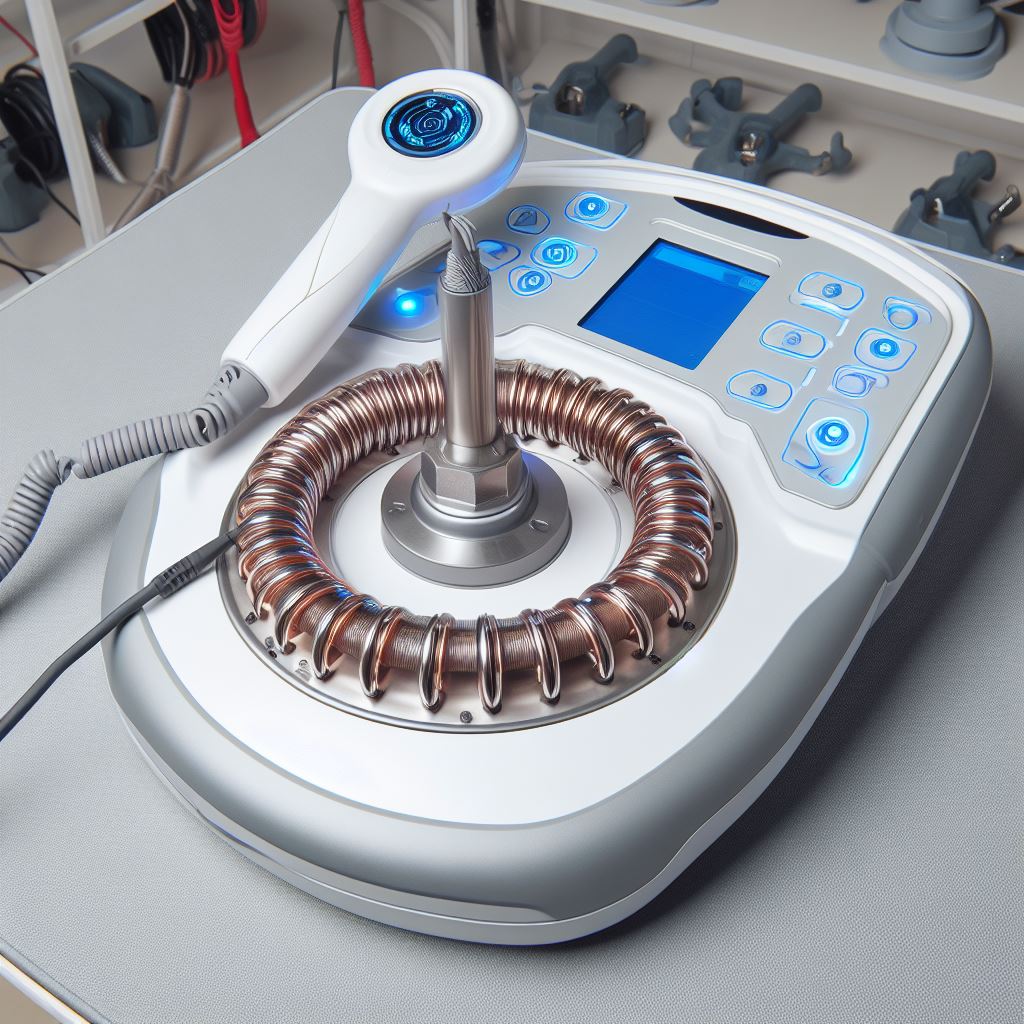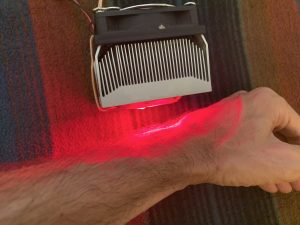Pulsed Electromagnetic Field Therapy for Pain Relief

While the name is a bit of a mouthful, pulsed electromagnetic field therapy, or PEMF appears to hold promise for a number of different health conditions. PEMF consists of an electrical device that sends pulses of electricity through a treatment coil. These pulses produce an electromagnetic field that can be applied to different locations over the body.
While PEMF is an interesting treatment, it is challenging to research due to numerous variables and configurations that may change the effects. The length of the pulse, the frequency of the pulse, the strength of the pulse and the duration of exposure can all affect results. In addition, the type and shape of the device used to deliver the field can also influence the effects. Some devices even use bursts of multiple high frequency pulses rather than a single pulse. As such, it is often difficult to draw direct conclusions on any one PEMF device and its benefits without a study highlighting its use for the condition of interest. In other words, approach any PEMF device marketed for benefits with a high level of skepticism without significant research backing.
Yet, even with all of these challenges and caveats, research into PEMF continues to show potential benefits for a number of different conditions, although this article will focus just on pain:
- Pain and tissue healing
- Osteoporosis and bone fractures
- Mental health (see the article on transcranial magnetic stimulation, a form of PEMF)
PEMF for Pain and Tissue Healing
Pain conditions are some of the most common conditions to have been studied with PEMF therapy. And in general, the research supports its benefits.
Early Studies
Shoulder Tendonitis
One of the first studies used PEMF for the treatment of shoulder tendinitis that was not responsive to steroid injections and other standard treatments (Binder 1984). The treatment itself was intensive, 5-9 hours PEMF exposure per day through one-hour minimum treatment intervals. The pulse frequency was 73 times per second. Treatment was applied between four and eight weeks. By the end of the study 65% of patients were symptoms free, with an additional 17% having significant improvements. While the study was published in the top tier medical journal The Lancet, it took years before other researchers started to explore the effects of PEMF.
Osteoarthritis
Almost ten years later, the next study on joint pain focused primarily on osteoarthritis of the knee (Trock 1993). The protocol was less intense, with 18 half-hour sessions of treatment administered over one month. For some reason, the exact frequency of treatment was not specified and just listed as “extremely low frequency” under 30 pulses per second. Improvement in arthritis symptoms was between 23% and 61% with PEMF compared to 2% to 18% with placebo.
A separate trial on knee osteoarthritis used a device that provided very short microsecond pulses at 7.8 times per second and 3 times per second (Pipitone 2001). Three ten minute sessions were applied daily, with the morning and afternoon sessions at 7.8 times per second and the evening session at 3 times per second. After six weeks of treatment, pain scores were reduced by a very modest 10%. While statistically significant, a ten percent pain reduction is likely not clinically significant.
Pelvic Pain
A study in women with pelvic pain due to painful menses, endometriosis, ruptured ovarian cysts, post-operative bruising and painful intercourse, among other pelvic pain conditions, were treated with PEMF (Jorgensen 1994). The machine (called PAP-IMI) used in the study provided extremely short pulses of microsecond duration, typically under 30 per second that contained much higher frequencies in the megahertz range. Obviously, a more complex PEMF signal than some of the other devices. In the study, 90% of patients with pain had “marked, even dramatic relief.” In some cases, treatment allowed for the avoidance of surgical procedures.
While the study results appear impressive, the device used in this trial is not without controversy. Of the PEMF devices covered, this one uses much higher power that may carry more significant risks. The device did not have FDA approval in the United States and was associated with a number of deaths, although causality was not fully determined (Willmsen 2007). The device was never marketed directly to consumers and cost around $55,000. Without robust clinical trials establishing safety, this form of PEMF should be avoided, and highlights the vast differences that exist between treatment devices.
More Recent Trials
Osteoarthritis
A study in 2016 used a lower power device that produced very short pulses 1000 times per second of a 27.12 Megahertz carrier frequency (Bagnato 2016). The PEMF treatment was intensive, 12 hours per day for one month’s duration. At the end of the treatment period, pain reduction was significant, with pain levels reduced by almost 25% in the active treatment group. For simplicity, the device could be worn and was typically applied overnight.
Post Cesarean Section Surgical Pain
The same device from the previous study was utilized for a week for women who had to undergo a surgical birth or cesarean section (Khooshideh 2017). Over the week of treatment following the surgery, pain levels were roughly a third lower from the active PEMF treatment and tissue healing outcomes were better than sham treatment.
Cervical Disc Herniation

The vertebrae in the neck are separated by discs composed of connective tissue. These discs sometimes bulge or rupture, a process termed herniation which can cause significant pain. In the study, treatment included standard therapy plus PEMF or sham treatment. The PEMF treatment used fairly low intensity pulses, 50 times per second for twenty minutes, five days a week for three weeks. At the end of the twelve week study, pain improved 33% with PEMF as compared to just 15% with standard treatment.
Meta-Analyses
For osteoarthritis, a recent meta-analysis of the research concluded that PEMF was effective for reducing pain, stiffness and restoring function (Tong 2022). The effect sizes were moderate to large, indicating a potentially robust effect from PEMF treatment.
In cases of low-back pain, PEMF also appears to provide benefits. As a treatment, PEMF was shown to work best for chronic low-back pain in a recent meta-analysis, although physical function did not improve compared to standard treatment with PEMF (Sun 2022).
Conclusion
PEMF therapy, as a whole, appears to show promise for treating pain, among other conditions. However, due to the significant differences between PEMF machines and protocols, standard recommendations are difficult to make. While PEMF machines are available directly to consumers, significant caution is warranted, as many of these devices are not approved for treatment, or may not provide the same results as what has been found in the research literature.
Due to the complexity of PEMF therapy, it may take a while for the research to unravel which types of PEMF therapy are most effective for different conditions. Fortunately, most PEMF therapies appear to be safe (with one potentially major exception highlighted above), with minimal side effects, when used properly.



